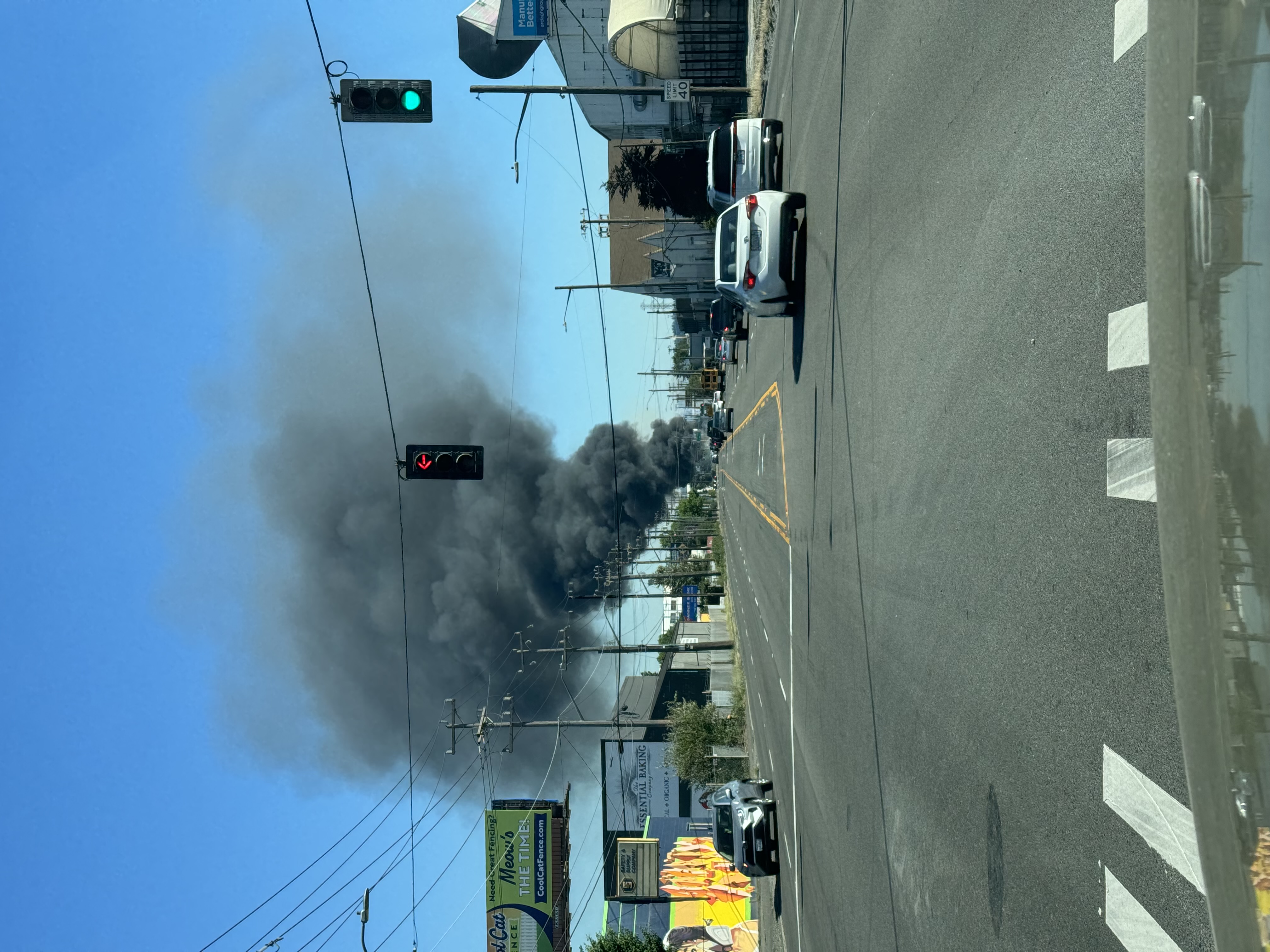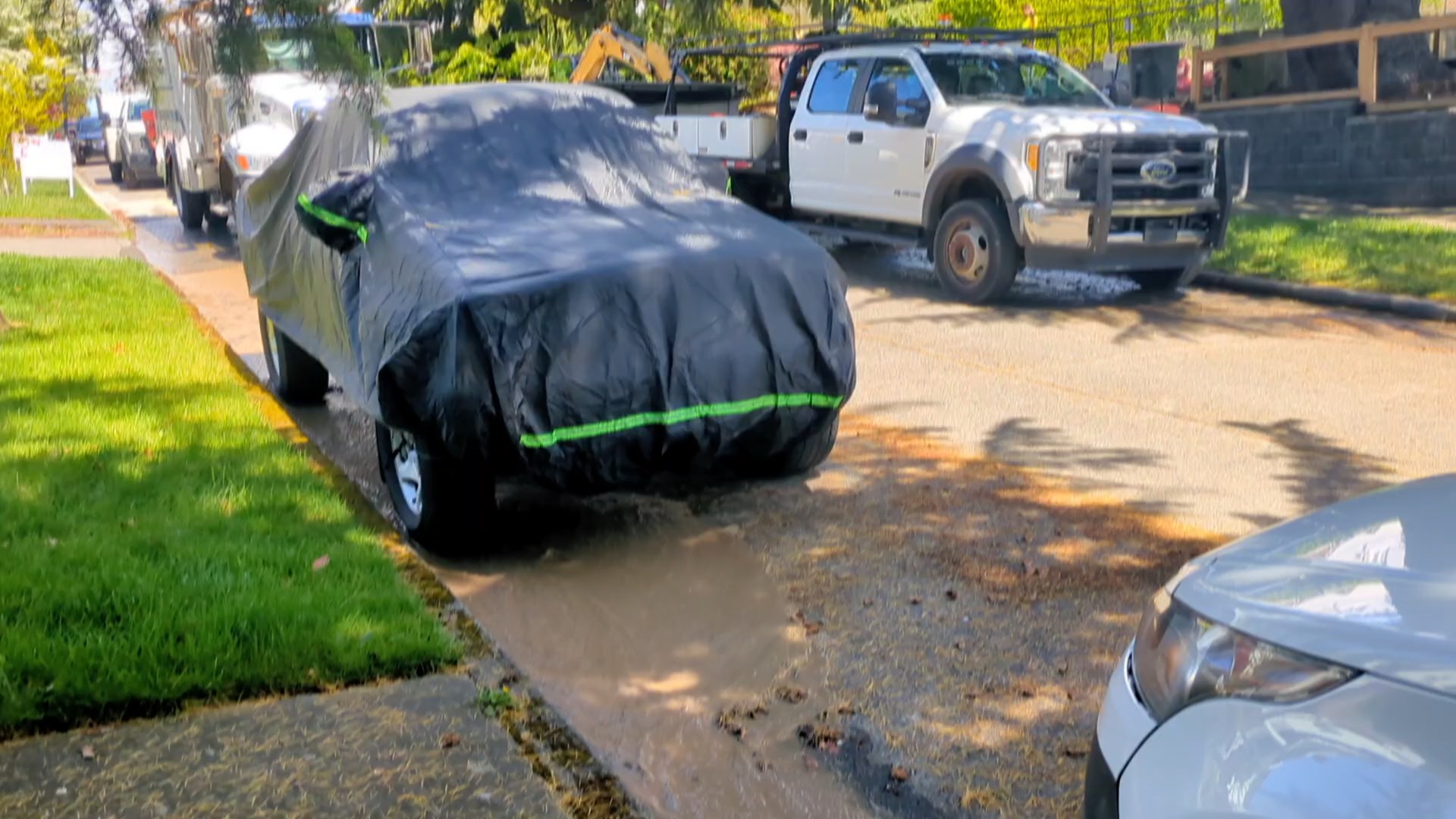By Tracy Record
West Seattle Blog editor
When West Seattle light-rail construction begins, “we’re going to be the first area in West Seattle impacted,” explained Pete Spalding as he opened last night’s Pigeon Point Neighborhood Council meeting, with Sound Transit guests in the spotlight, nine months after ST’s last PPNC appearance.
The Q&A that followed shone some light on topics of major interest, including cost, and why a much-cited number is nonetheless “not a number to get stuck on.” But first:
The meeting began with ST’s Leda Chahim going through a slide deck with some background, including an explanation of what the “representative project” represents, as well as the current phase of planning for the formal environmental studies – the third level of review/screening that’s unfolded over the past year. (See the slide deck here.)
Another ST rep, Robin Gold, went over the three routing alternatives currently being mulled in Level 3 – the “representative project” (the elevated ST says was roughed out in the package it took to voters in 2016), the “West Seattle Elevated/Chinatown-ID 5th Avenue/Downtown 6th Avenue/Ballard Elevated” option, and the “West Seattle Tunnel/Chinatown-ID 4th Avenue/Downtown 5th Avenue/Ballard Tunnel” option.
Reiterated was the point that sections of these could be “mixed and matched” by the time a final preferred alternative is determined. The dozens of evaluation criteria and sub-criteria were quickly touched on.
Of particular interest to Pigeon Point is where the new rail-only bridge will be built – north of the current bridges, or south? These slides offered some points of comparison:
In response to a question, Chahim noted that the cost estimate is still early. The cost question came up again later, but first, the presentation continued, with comparisons from further westward along the West Seattle line:
It was pointed out that an east/west station orientation in The Junction is not ideal for future expansion, and that the height of the guideway along Genesee is another consideration – “it would be lower if we were entering into a tunnel.”
And then it was on to a timeline recap, from tonight’s Delridge station workshop through the March 21st and 29th Stakeholder Advisory Group and Elected Leadership Group meetings, at which, Chahim said, the Delridge and Chinatown-ID stations would be a focus, followed by the two groups’ meetings to make Level 3 recommendations on April 17th an 26th, and finally the ST Board’s decisionmaking in May regarding what to send into full environmental study. She also recapped the current “scoping” process (extending the public-comment period to April 2nd), and noted that mid-2020 is when ST would start contacting potentially affected property owners.
Specifics that ST’s Mike Bulzomi outlined included:
*ST follows federal process
*You would get an appraisal that becomes the basis of an offer to purchase
*You also get the opportunity to get your own appraisal & they’ll reimburse you up to $5,000
*They also will reimburse up to $7,500 for legal advice
*Up to $2500 if you need tax advice
*They pay all the closing costs
*Separate relocation process including walking you through it with an assigned relocation specialist
*ST pays 100 percent of your moving expenses if you need to move
*Also helps find a replacement property (functionally equivalent – “if you have a 3 bedroom, 2 bath home, we look for a 3 bedroom 2 bath home at minimum”)
*If ST buys your property for $500,000 and the comparable on the market costs $600,000, ST makes up the difference
Is all that online? an attendee asked. Reply: No, but ST will email it on request. And Chahim added that ST offers individual meetings – even this early – with individual property owners who are concerned.
Another attendee asked about 3D visualizations for this area, saying he hasn’t seen them. He also wants to know the height crossing the Duwamish, the height of a potential guideway on Pigeon Point.
Spalding noted that either elevated alternative running south of the current bridge would have a “big effect” on north Pigeon Point, so his questions included how close would it be, and who owns most of the property on the north slope of the point. It’s Seattle Parks, acknowledged ST reps, and yes, that would trigger the federal 4f regulations/considerations.
What about reports of soil instability found in early testing? Spalding pressed.
That’s something for the upcoming environmental review to delve into, replied Chahim. And if it doesn’t seem to be addressed there, that’s something for the next comment period.
More Q&A: What about tenants?
They also qualify for displacement benefits, and help finding a replacement property.
What about businesses?
They are qualified for re-establishsment benefits, some of which are capped at $50,000, so they try to move more potential assistance sums into the “moving” category, which the ST reps said is uncapped.
Back to the height issue. Crossing the Duwamish River, as has been said before, it would be about the height of the existing West Seattle Bridge. The guideway would be “coming down as it approaches Pigeon Point,” added ST, though they did not have information at hand regarding the potential guideway height at 19th SW on Pigeon Point.
Another attendee said she can’t figure where there’s space “between the bridge and the hill” that the light rail would be “as we enter onto the West Seattle Bridge.”
How close could a rail/guideway be from someone’s home? Reply: Ten feet is “technically” what’s allowed – that in reality it might not be allowable to get that close.
Then came an exchange about costs, referring to the $700 million mentioned in this slide (and multiple earlier presentations):
How realistic is the $700 million number – statistical confidence? Not necessarily, said Chahim, since they’re very early in the process. She wouldn’t put a percentage on it. It “does take into account real estate costs, construction … we take a look at POTENTIALLY how much more something (could cost)… but that number, I wouldn’t take to the bank at this point.” Also: “We are asking (the SAG and ELG) for a couple different types of recommendations … the idea is, could we have one alternative that is comparable in scope and budget to the representative project and one that could require third-party funding … so there’s two potential alternatives going forward.” But “we’ve got more work to do” … right now it’s more comparative, “important for comparison but it’s not a number to get stuck on,” Chahim summarized.
The next questioner brought up the need for clarification on another projected cost factor, the different costs of the Duwamish River crossing (as shown above). Reply: The potential use of port property is a major difference.
“So the property on the north side is more expensive than the property on the south side (of the bridge)?” pressed one attendee. Reply: “It’s a preliminary combination of real state plus preliminary engineering and construction estimates.”
Speaking from the audience, Lindsay Wolpa, regional government-affairs manager for the Port of Seattle, said she would be happy to come back to another meeting with port-specific details and information “because we’re very focused on that.”
How high would the stations be off the ground? 50 to 60 in the representative project, 40 to 50 feet in the others.
How wide would it be? asked another attendee. Gold: 35′ = space for two to travel and a separation. “So you’ll be excavating the north part of the hill?” Chahim: “It’s not at ground level … We will know much more in the environmental process.”
Another attendee asked how people should phrase scoping comments, and mentioned that he is part of the East Alaska Junction Neighborhood Coalition (featured on WSB Sunday night – here’s their website).
The ensuing discussion included a suggestion that, among many other things, commenters could specify whether they prefer south or north crossing – “the ‘why’ is important too,” Chahim added, and this is also the stage at which a commenter could make mix-and-match suggestions.
Then discussion veered into some of what will come up at tonight’s Delridge Station workshop, a Sound Transit-convened meeting, and it was noted that the 2021 plan to convert Metro Route 120 into RapidRide H Line needs to tie into light rail in North Delridge.
And finally talk turned to an earlier-proposed alternative that didn’t make it to the Level 3 review, the “purple line” – this slide recapped where things stood at the end of Level 2:
Deb Barker – a West Seattleite who’s a member of the Stakeholder Advisory Group – spoke up and said the SAG had been in favor of it but the ELG threw it out.
Next Q: Can ST connect residents here to property owners who have already been through the acquisition/relocation process? asked another woman. ST has built enough by now that there “should be some insight,” the attendee noted. Chahim promised to “take that back” (to HQ) but is worried “how that might look, or privacy issues …”
How disruptive might the station construction process go? “If we’re in the roadway, we’re less on (private) properties, but more (affecting) traffic,” Chahim said. “We have not done detailed construcction phasing (studies) yet. … There would potentially be impact to the raodway.”
“They kept the road open next to the station at Northgate,” Spalding interjected.
An attendee then returned to the port issue. Chahim said they’d been meeting with the port in hopes of finding what would be the least impactful north crossing, but there are “additional costs” related to how Terminal 18 might be affected. “There’s a kind of ecosystem – affecting one thing (would affect another).”
Port rep Wolpa then was brought up by Spalding. She noted that she lives in a part of West Seattle that’s not going to be directly affected. But as for her employer, “there’s an important economic impact … you can’t relocate a marine cargo terminal. … When it comes to something like construction .. a 3 to 5 year construction process along Spokane Street (which is already) terrible for businesses and terrible for (others) …” She said the port liked the purple line too and the port might be willing to contribute to the project – how much, too soon to say. End to end, “it’s a major deal for us …” She encouraged everyone to comment in the scoping process, since that mandates inccllusion. Wolpa emphasized that she “wants to see this done right.”
You can advocate for the purple line in your scoping commnts, Spalding noted, also mentioning that the West Seattle Chamber of Commerce (he’s its immediate past board chair) is likely to mention it in their forthcoming potential official comments too.
How much do our comments matter? one person wondered.
Maybe not much if something is only brought up by one or two people … but if a lot of people bring something up … “it can have an impact.”
WHAT’S NEXT: We’ll be covering tonight’s Delridge workshop, too (6:30 pm, Youngstown Cultural Arts Center, 4408 Delridge Way SW). Whether or not you’re going, April 2nd is your deadline to comment via the online open house.
WHAT’S NEXT:














| 36 COMMENTS